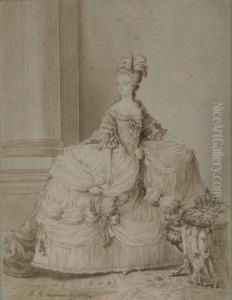Edouard Jean-Bapt. Moreau Paintings
Édouard Jean-Baptiste Moreau, not to be confused with other artists with similar names from later periods, was a French artist known for his contributions to the academic painting tradition of the 19th century. Moreau was born in 1820, during a time when France was experiencing significant political and social changes that would eventually lead to the upheavals of the mid-century revolutions.
His early life, like that of many artists of the time, was dedicated to rigorous study and mastering the techniques that were highly valued by the Académie des Beaux-Arts. This institution was the cornerstone of artistic education and the arbiter of taste in France. Moreau would have been trained in drawing from live models, studying the works of the Old Masters, and absorbing the principles of composition, perspective, and color that dominated academic art.
Moreau’s career unfolded in an era when the official Salon held enormous sway over an artist’s reputation and prospects. He would have aimed to exhibit his works at the Salon to gain recognition and commissions. His works likely included historical scenes, classical themes, and possibly portraiture, which were all genres favored by the academy and the art market of his time.
Unfortunately, there is a paucity of detailed information readily available about Moreau’s life and works. This may be due in part to the overshadowing fame of other artists named Moreau, such as Gustave Moreau (1826–1898), a symbolist painter who achieved much greater renown. Additionally, records from the period can be sparse for artists who did not reach the highest echelons of fame or whose works did not survive or remain in circulation.
Édouard Jean-Baptiste Moreau’s death in 1872 came at a time when the art world was on the cusp of dramatic change. The Impressionist movement was beginning to take shape, challenging the dominance of the academic style with which Moreau would have been associated. As such, his works, if extant, would represent the waning influence of an artistic tradition that was soon to be superseded by the new art movements of the late 19th and early 20th centuries.
